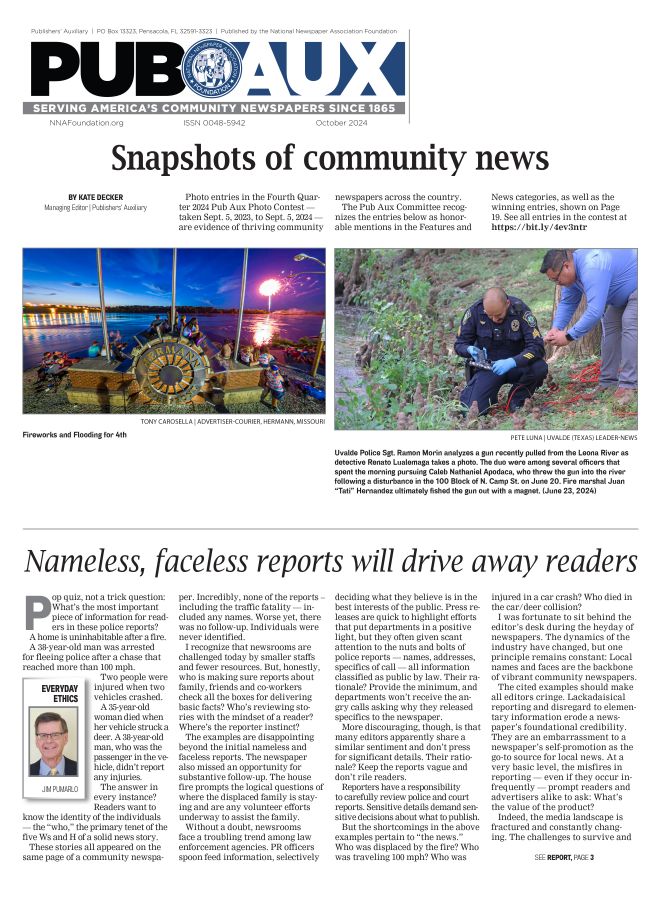FAA proposes drone use regulations
Feb 26, 2015
By Tonda F. Rush
NNA | CEO and General Counsel
WASHINGTON—Newspapers hoping to use drones to photograph crop disasters, floods and even accidents received long-awaited guidance in February from the Federal Aviation Administration in the form of proposed rules that still might not become final until 2017.
Commercial use of drones—including for journalistic photos—are not permitted under today’s rules.
But FAA signaled that it is considering changes that might put drone photography within reach of community newspapers.
Among the elements of a proposed rule are:
• Eliminating the requirement for a pilot’s license.
• Permitting only drones weighing less than 500 pounds.
• Allowing flights no higher than 500 feet in altitude only during daylight hours and always within sight of the pilot’s naked eye (although glasses would be permitted.)
• Protecting potential victims on the ground by prohibiting flights over people, except for those directly connected with the flight.
• Requiring a security check and competency test.
It has specifically ruled out “payloads” such as packages that might be transported by the likes of Amazon, and towing of other objects.
Uses outside the parameters of the proposed rule might still be permitted upon special application to the FAA. Until the new rules become final, commercial users are presently required to apply to the FAA for permission.
The agency is asking for comments on some potential elements of a new rule, including whether small drones should be permitted to fly over people.
National Newspaper Association members interested in drone use should send their comments to Publishers’ Auxiliary Managing Editor Stanley Schwartz at stan@nna.org. If community publishers have sufficient interest in the rulemaking, NNA will file comments with the FAA on behalf of the industry.
NNA President John Edgecombe Jr., publisher of The Nebraska Signal, Geneva, NE, said NNA welcomed the proposed new rules. He said he believes community newspapers might be uniquely positioned to use drones for news coverage.
“We are going to analyze this proposal and see whether we have anything constructive to add. For those of us operating in rural areas, for example, the concern about keeping a drone within eyesight may be less relevant. Many of us could benefit from being able to fly over flooded areas, for example, where no human activity would be threatened, but a birds-eye photo of conditions would keep our readers informed. I am looking forward to learning more about the opportunities,” he said.
A demonstration of a drone by University of Nebraska journalism professor Matt Waite is planned for the NNA convention Oct.1-3 in St. Charles, MO.







